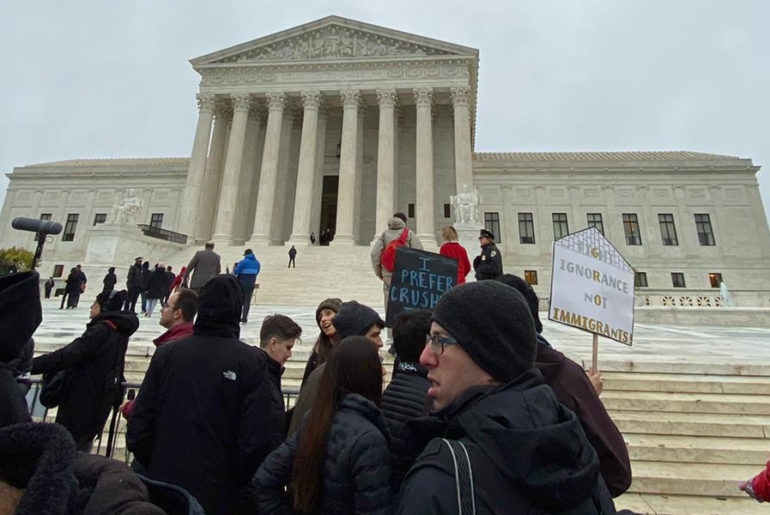On Tuesday, November 12, the Supreme Court heard arguments on the status of the Deferred Action for Childhood Arrivals (DACA) program. DACA was created in 2012 during the Obama Presidency to protect “Dreamers,” generally people who came to the US before they were 16 years-old, have lived here continuously and arrived either arrived without documents had their lawful status expires. DACA recipients are protected from deportation and receive work permits, and are called ‘Dreamers’ based on the Development, Relief and Education for Alien Minors (DREAM) Act, which was introduced in 2001 but never passed. An estimated 200 Dreamers (a total of approximately 660,000 people are DACA recipients) gathered outside the Supreme court with banners and signs while the Supreme Court considered the DACA program. Some Dreamers and their supporters marched through Washington in the days before the official gathering and some camped outside of the Supreme Court the night before. However, it wasn’t only those who will be directly impacted by the conservative-leaning court’s decision who rallied, many individual supporters and organizations who fight for the rights of immigrants were also present.
One of the groups who came out to support the cause was the Latin America Working Group (LAWG).
“It was a freezing cold and rainy day, but that didn’t deter the hundreds of people there raising their voices in solidarity for the DACA recipients inside of the Supreme Court” says Lauri Alvarez. Alvarez is a Program Assistant and Fundraising Associate at LAWG and attended the event alongside her colleagues.
“LAWG is a grassroots advocacy nonprofit that wants just US foreign policy towards Latin America.” Alvarez explained.
One of LAWG’s priorities is to pass permanent protections for Dreamers and TPSianos (immigrants with Temporary Protected Status). LAWG promotes and explains how to support these causes and related issues that are important to immigrants through petitions, advocacy, breaking down important bills and legislations, and supporting the causes in-person (like the November 12 rally).
Alvarez, LAWG, Dreamers, and supporters marched this month, but the court will probably not come to a conclusion about the DACA case until June 2020. So what else is on the horizon for LAWG?
“Educate policymakers, scholars, immigration lawyers, educators, press, and the public on the drivers of and rights-based solutions to forced migration from Central America, building towards a new U.S. policy towards the region,” says Alvarez about their 2020 action plan.
There are many other immagration policies that impact immigrants and people from Central and South American that have only recently passed or are still being debated. For example, the first Honduran asylum seeker was just sent to Guatemala under Trump’s controversial ‘safe third country deal.’ We can expect to see protesters, supporters, LAWG, and other organizations on the streets again soon, fighting against the agenda of the current administration.

